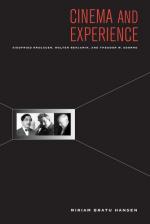|
This section contains 13,506 words (approx. 46 pages at 300 words per page) |

|
SOURCE: “Adorno in Reverse: From Hollywood to Richard Wagner,” in After the Great Divide: Modernism, Mass Culture, Postmodernism, Indiana University Press, 1986, pp. 16-43.
In the following essay, originally published in 1983, Huyssen discusses the influence of Adorno's theory of the “culture industry.”
Ever since the failure of the 1848 revolution, the culture of modernity has been characterized by the contentious relationship between high art and mass culture. The conflict first emerged in its typical modern form in the Second Empire under Napoleon III and in Bismarck's new German Reich. More often than not it has appeared in the guise of an irreconcilable opposition. At the same time, however, there has been a succession of attempts launched from either side to bridge the gap or at least to appropriate elements of the other. From Courbet's appropriation of popular iconography to Brecht's immersion in the vernacular of popular culture, from Madison Avenue's...
|
This section contains 13,506 words (approx. 46 pages at 300 words per page) |

|


